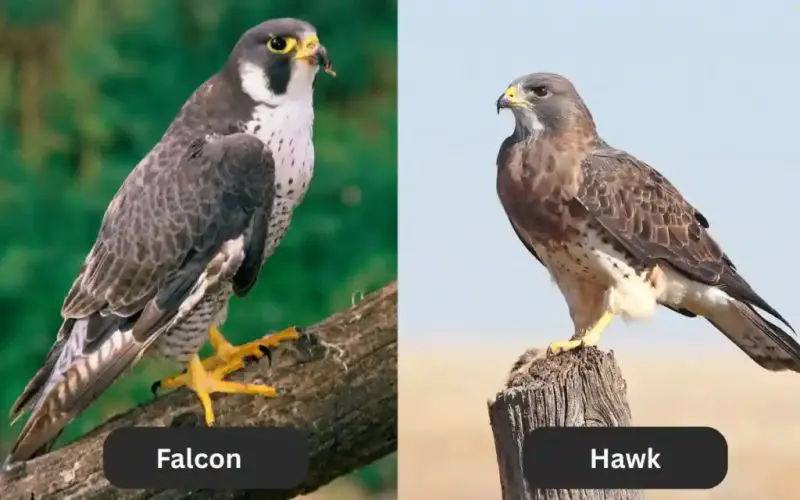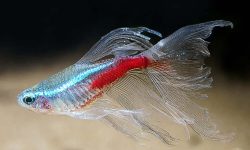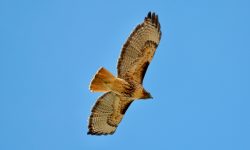At first glance, falcons and hawks may appear strikingly similar. Both are powerful birds of prey with sharp talons, hooked beaks, and keen eyesight. Both dominate the skies as aerial hunters, often mistaken for one another by casual birdwatchers. Yet despite their shared family tree as raptors, falcons and hawks belong to different biological groups and possess distinct anatomical, behavioral, and ecological traits.
Understanding the difference between these birds is not just about identification—it reveals the diverse strategies of predation and survival that raptors have developed over millions of years. In this article, we will explore the scientific distinctions, flight mechanics, hunting styles, and evolutionary paths that set falcons and hawks apart.

Taxonomy: Not As Closely Related As They Seem
Different Families, Different Lineages
Despite their superficial similarities—sharp talons, hooked beaks, and carnivorous diets—falcons and hawks belong to entirely different evolutionary lineages. Falcons are classified in the family Falconidae, whereas hawks, along with eagles, kites, and harriers, belong to Accipitridae, a much broader and older group of raptors.
This distinction isn’t just semantic. It reflects deep phylogenetic separation, confirmed through molecular genetic analyses that compare mitochondrial and nuclear DNA. Surprisingly, these studies have shown that falcons are more closely related to parrots and songbirds than they are to hawks and eagles. In contrast, hawks share their ancestry with other diurnal birds of prey that arose from a different raptorial branch of the avian evolutionary tree.
Evolutionary Divergence: Parallel Paths, Different Outcomes
The split between Falconidae and Accipitridae dates back roughly 50–60 million years, likely soon after the Cretaceous-Paleogene extinction. From that divergence point, each group followed a distinct evolutionary path, shaped by different ecological pressures and prey dynamics.
Falcons evolved for speed and aerial agility. Their bodies became more streamlined, their wings longer and narrower, and their flight style more rapid and direct. Species like the Peregrine Falcon developed stooping dives that exceed 200 mph, a trait unmatched by any other bird.
Hawks, on the other hand, evolved for maneuverability and power. Forest-dwelling hawks such as the Cooper’s Hawk developed short, broad wings and long tails for weaving through dense trees. Open-country species like the Red-tailed Hawk evolved broader wings and strong gliding ability for soaring over grasslands and deserts in search of prey.
Structural and Sensory Differences
Beyond external appearance, there are notable morphological and neurological differences between falcons and hawks. Falcons have a tooth-like notch in their upper mandible—called the tomial tooth—which is used to sever the spinal cords of their prey quickly. Hawks lack this feature and typically rely on their powerful feet to kill prey through crushing force.
Brain anatomy also varies. Falcons possess larger optical lobes relative to their brain size, which supports their exceptional eyesight and high-speed hunting. Their visual processing is among the fastest in the animal kingdom, essential for locking onto fast-moving targets mid-air. Hawks, while also visually acute, often rely more on stealth and ambush tactics, especially in wooded environments.
Implications for Ecology and Behavior
These taxonomic and anatomical differences have real-world implications for how these birds interact with their environments. Falcons are typically aerial predators, favoring open skies where their speed and vision give them an edge. They often nest on cliffs or tall structures and hunt birds mid-flight.
Hawks, in contrast, are more often ambush predators, using cover and elevation to surprise prey. They’re more versatile in habitat use—ranging from forests to grasslands—and show greater variation in prey selection, including mammals, reptiles, and even carrion.
Understanding this divergence clarifies why conservation strategies, habitat needs, and even rehabilitation techniques must be tailored differently for hawks and falcons, despite their superficial similarities.
Anatomy: Beak, Wings, and Build
Falcons: Streamlined Speed Machines
Falcons are the epitome of aerodynamic refinement. Their bodies are long, slim, and tapered, reducing drag and enhancing lift during high-speed flight. The wings are long, narrow, and pointed, a configuration that favors velocity over maneuverability. This wing shape enables falcons to sustain rapid flight and execute dramatic stoops from extreme altitudes.
A key anatomical signature of falcons is the “tomial tooth”—a sharp notch on the upper mandible. Unlike hawks that rely on brute force with their feet, falcons use this structure to deliver a precision bite to the neck vertebrae of prey, severing the spinal cord quickly and efficiently. This adaptation is particularly effective for dispatching birds in mid-air, their most common prey type.
The Peregrine Falcon exemplifies these traits to the extreme. During its high-speed stoop—measured at over 240 mph (386 km/h)—its wings tuck into its body, forming a living projectile. Internal air sacs, reinforced nasal valves, and a tightly knit feather structure allow it to withstand the enormous aerodynamic forces of such dives.
Hawks: Robust and Versatile Predators
Hawks present a very different anatomical profile. Their wings tend to be shorter and broader, especially in woodland species like the Cooper’s Hawk or Sharp-shinned Hawk. This wing configuration favors tight turning, explosive takeoffs, and controlled glides, ideal for navigating through cluttered forests or pursuing prey through trees.
The tail is often long and rounded, acting like a rudder for mid-flight steering. In open-country species such as the Red-tailed Hawk, wings are even broader, supporting long-duration soaring over grasslands and deserts. This diversity in wing structure reflects the hawk’s generalist lifestyle and ecological flexibility.
In contrast to falcons, hawks lack a tomial tooth and instead rely on extremely powerful feet and talons to subdue prey. Their legs are more muscular and their toes thicker, optimized for delivering crushing force to immobilize mammals, birds, and reptiles. This method of subjugation reflects a different evolutionary strategy—one that emphasizes control, restraint, and ground-based versatility rather than speed.
Internal Structure and Muscle Distribution
Falcons have relatively larger pectoral (flight) muscles proportionate to their body mass, allowing them to maintain fast wingbeats during pursuit. Their bones are slightly denser than many birds of similar size, providing rigidity that helps them resist the compressive forces encountered during high-velocity dives.
Hawks, on the other hand, have a more robust skeletal frame and a lower wing loading (body weight relative to wing area), which grants them superior maneuverability in confined airspace. Their leg bones are thicker and more reinforced, especially in species that regularly take on prey as large as rabbits or squirrels.
Functional Outcomes in the Field
These anatomical differences produce profound distinctions in hunting strategy. Falcons are pursuit predators, relying on speed, surprise, and surgical strikes to capture prey in open air. Their success depends on visual tracking, acceleration, and precise timing.
Hawks are ambush or soaring hunters, using stealth, elevation, or cover to approach prey undetected before launching a rapid attack. They often rely on perch hunting, sudden stoops, or terrain-assisted ambushes.
While both groups are elite avian predators, their builds reflect radically different paths to ecological success—falcons as fast-striking aerialists, hawks as muscular ambushers and tactical soarers.
Flight Patterns and Behavior
Falcons: Precision Speed and High-Altitude Tactics
Falcons are the aerial athletes of the bird world. Their flight is characterized by rapid, stiff wingbeats, with little to no gliding during routine movement. This style results from a combination of long, pointed wings and a lightweight, streamlined body, optimized for sustained high-speed travel and tight aerial control.
The most iconic aspect of falcon flight is the stoop—a controlled, high-speed dive that can exceed 200 mph (320 km/h) in the Peregrine Falcon. During a stoop, the falcon tucks its wings close to its body, forming a teardrop shape that minimizes drag. Specialized nostrils with bony tubercles and reinforced respiratory systems allow falcons to breathe under immense air pressure during these dives.
Falcons often hunt from high altitudes, surveying vast open areas for prey. Their incredible eyesight, combined with high-speed pursuit capability, enables them to detect and intercept flying birds or swift-moving animals with split-second accuracy.
Hawks: Masters of Soaring, Gliding, and Ambush
Hawks take a fundamentally different approach to flight. Broad-winged species like the Red-tailed Hawk are soaring specialists, using rising columns of warm air—called thermals—to gain elevation without excessive energy use. Once aloft, they glide effortlessly for long distances, scanning the ground below for subtle movements of potential prey.
Their flight is marked by intermittent flapping and gliding, with a buoyant, floating quality. This energy-efficient style allows them to cover wide territories while minimizing caloric expenditure.
In contrast, forest-adapted species like the Cooper’s Hawk have shorter, rounded wings and long tails that grant superb agility in dense woodlands. These hawks employ burst-flight behavior—short, explosive movements with tight turns that let them weave through trees and strike from close range.
Strategic Differences in Hunting Behavior
Falcons are typically pursuit hunters. Their aerial style is direct, high-speed, and relentless. They rely on open airspace and line-of-sight attacks, often engaging their prey in high-speed chases. Once a target is selected, the falcon dives or overtakes it mid-flight, using its tomial tooth to sever the spinal cord and kill instantly.
Hawks, on the other hand, are stealth predators. Many hawk species strike from concealment or elevation, launching downward or sideways attacks when prey is most vulnerable. They tend to use surprise and overwhelming force, grabbing prey with powerful talons and pinning it to the ground. Their hunting success often depends on timing, cover, and short bursts of energy rather than sustained speed.
Energy Use and Habitat Adaptation
These differences in flight style reflect distinct energy strategies and habitat adaptations. Falcons, optimized for open environments like cliffs, grasslands, and deserts, expend more energy per unit of flight but gain speed and visibility in return.
Hawks, especially soaring species, are tuned for energy conservation, making use of natural air currents and elevated perches. Forest hawks sacrifice speed for maneuverability, fitting their structure to complex, visually obstructed habitats.
Hunting Strategies and Diet
Falcons: Precision Strikers in the Sky
Falcons are aerial specialists, fine-tuned by evolution for speed-based predation. Most falcons, especially species like the Peregrine Falcon and Merlin, excel at capturing birds in mid-air. Their hunting begins from high altitude, where they visually lock onto a moving target and then initiate a swift dive, often at breathtaking velocities.
What distinguishes falcons from other raptors is not just their speed, but their killing method. Instead of relying on foot strength, falcons strike prey with their feet to stun or destabilize it, then deliver a precise bite with the tomial tooth—a specialized notch on the beak—to sever the cervical vertebrae. This strategy minimizes the risk of injury and reduces energy expenditure during the kill.
Their diet varies by species and location, but typically includes small to medium-sized birds, large insects, and occasionally rodents or lizards. In desert habitats, they may shift to ground-dwelling prey, while urban falcons often prey on pigeons, starlings, and songbirds.
Hawks: Ground-Focused Power Predators
In contrast, hawks rely on force, stealth, and ambush tactics. Species like the Red-tailed Hawk or Swainson’s Hawk often hunt from elevated perches, scanning the ground for movement. Once prey is spotted, they execute a rapid descent, pinning the animal with powerful talons.
Hawks kill not with their beaks but with crushing foot pressure. Their muscular legs and sharp talons can break bones and cause internal trauma in mammals such as rabbits or squirrels. This technique is particularly useful when dealing with struggling prey or creatures capable of fighting back.
Their diet is extremely diverse, including mammals (rodents, rabbits), reptiles (snakes, lizards), birds, and large insects. This dietary flexibility is part of what allows hawks to succeed across a wide range of environments—from dense forests to open farmland.
Habitat and Distribution
Falcons: Masters of the Open and the Urban
Falcons gravitate toward open landscapes that match their flight style. They are frequently found in grasslands, deserts, alpine regions, and more recently, urban environments. Their preference for high visibility and aerial pursuit means they avoid thick forests but flourish in places where they can soar unimpeded.
One of the most remarkable cases of adaptation is the urban Peregrine Falcon, which now breeds on skyscrapers and hunts pigeons in bustling cities. These artificial cliffs mimic natural ledges, and city life provides ample prey and few predators.
Other falcons, like the Prairie Falcon, are closely tied to arid, open spaces where visibility and thermals are abundant.
Hawks: Adaptive Occupants of Diverse Habitats
Hawks are highly adaptable in terms of habitat selection. Some, like the Sharp-shinned Hawk and Cooper’s Hawk, specialize in forest interiors, navigating tight spaces with agility. Others, like the Ferruginous Hawk and Swainson’s Hawk, prefer open plains, deserts, or agricultural fields, where they can soar and spot prey from afar.
Migration patterns further reflect this adaptability. For example, Swainson’s Hawks migrate from North America to South America, following insect outbreaks. Their ability to exploit a range of prey across continents is a testament to their ecological plasticity.
Nesting and Reproduction
Falcons: Minimalist Cliff-Dwellers
Falcons are minimalist nesters. They typically do not build elaborate nests, instead scraping shallow depressions—called scrapes—on cliffs, building ledges, or ground outcrops. These sites offer elevation for protection and a vantage point for detecting prey.
During nesting, the female handles most of the incubation, while the male provides food, especially during early chick development. Falcons usually raise 2–4 chicks per brood, and their rapid development and early fledging reflect their high-energy lifestyle.
In urban settings, peregrines use skyscrapers, bridges, and towers as nesting sites, illustrating their flexibility when vertical access is available.
Hawks: Architectural and Parental Investment
Hawks construct large stick nests, typically high in trees or on cliffs, lining them with bark, leaves, or even fur. The nesting process is more collaborative, with both parents contributing to construction, incubation, and chick-rearing.
This greater investment in nesting structure reflects the hawk’s slower reproductive cycle. Many hawk species lay fewer eggs but show intense parental care, with chicks staying longer in the nest and depending on the adults for extended periods post-fledging.
Vocalizations and Communication
Falcons: Sharp, Urgent, and Repetitive
Falcon vocalizations are generally sharp, high-pitched, and rapid-fire. They’re often used in courtship displays, territorial disputes, or when alerting mates to threats. The “kek-kek-kek” or “ree-ree-ree” calls of Peregrines are well-known among birders.
Their vocal style aligns with their behavior—high energy, highly mobile, and quick to react. These sounds are not usually long-distance calls but are meant to communicate rapidly in open or high-altitude settings.
Hawks: Bold Screeches and Territorial Cries
Hawks, especially larger species like the Red-tailed Hawk, are famous for their piercing, drawn-out cries. These sounds serve multiple functions: establishing territory, deterring intruders, and coordinating with mates.
The classic Hollywood raptor scream—used in movies for everything from eagles to dinosaurs—is often the cry of a Red-tailed Hawk. These calls carry far, matching the hawk’s tendency to perch or soar in open skies.
In forest species, calls are often shorter and sharper, adapted for echoing through dense vegetation without distortion.
Conclusion
While falcons and hawks share many superficial traits as birds of prey, they are distinct in nearly every important aspect—from taxonomy and anatomy, to flight dynamics, hunting methods, and ecological roles. Falcons are built for speed and surgical precision, favoring aerial prey and open spaces. Hawks are versatile and powerful, using stealth and strength to ambush prey in forests or grasslands.
By learning to distinguish these raptor cousins, we gain a deeper appreciation for the diversity of evolutionary strategies among birds of prey. Whether watching a falcon streak across the sky or a hawk glide over a field, one thing becomes clear: each is a master of its domain, shaped by the skies in profoundly different ways.






